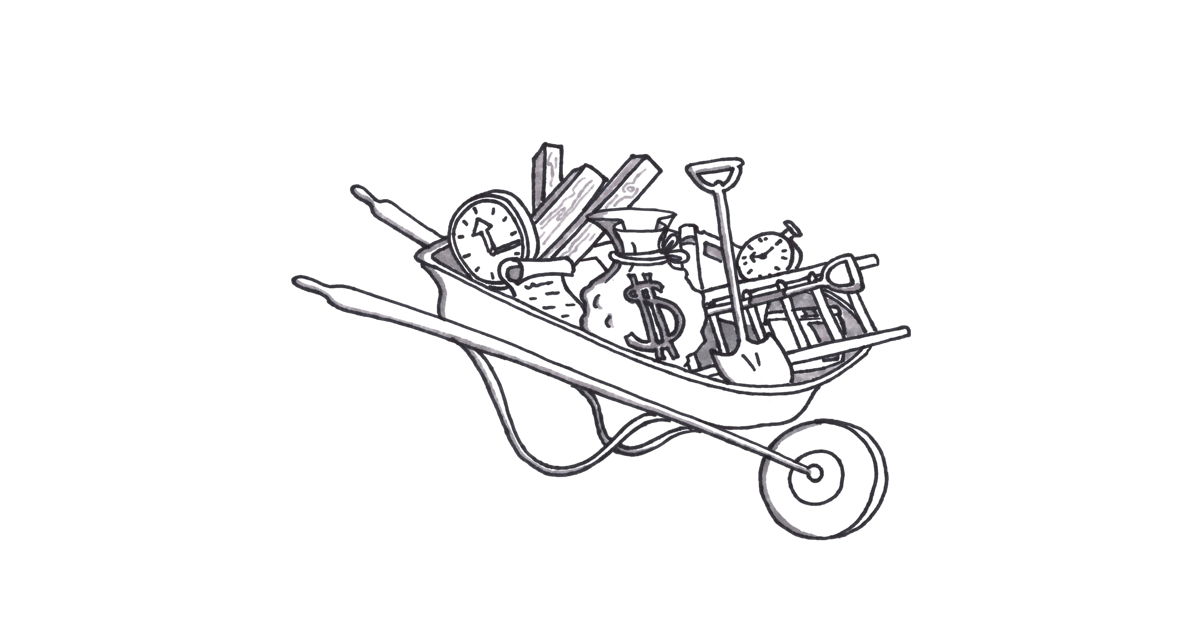By: Tristan Kromer
Corporate innovation labs engage founders and participants across professional boundaries to bring startup innovation techniques into a corporate environment. But providing teams with the time, money, and skills to innovate isn’t easy. Every company’s innovation team faces a unique set of challenges operating in a rigid structure, and DHL is no different. With more than half a million employees, DHL is the largest logistics company in the world. Johannes “Joey” Naumann heads up DHL’s Startup Lab, the company’s internal incubation program at their headquarters in Bonn, Germany. He had to create a structure that gave teams enough flexibility to be creative, while living with corporate constraints.
With more than half a million employees, DHL is the largest logistics company in the world. Johannes “Joey” Naumann heads up DHL’s Startup Lab, the company’s internal incubation program at their headquarters in Bonn, Germany. He had to create a structure that gave teams enough flexibility to be creative, while living with corporate constraints.
The Limits of Time and Space
Problem: Remote workers
Solution: Virtual meetings and regular retreats
Structured like a normal accelerator, DHL’s Startup Lab has its own budget for a small staff of full-time mentors working out of their headquarters. The members of its innovation teams, however, work separate day jobs at DHL. Hovering somewhere between 10 and 20 teams, with 2-5 people per team, the innovation team members are scattered throughout the world. This limits physical interaction to one-week retreats every other month.
The rest of the work is done through virtual meetings. If a project is showing a great deal of potential, members are allowed to devote more time to its completion. Sometimes they even set aside their day job entirely.
This sort of flexibility within a large corporation isn’t an easy sell. There is a learning curve to testing and validating new ideas in a traditional, hierarchical, and execution-focused organization. But Joey’s first job with DHL was with an early innovation program called “R&D and Ideation” that focused on new business and technologies. After helping bring about one of DHL’s first corporate startups — a digital freight forwarder — he got the chance to create the Startup Lab.
“On the one hand, I felt I could really contribute with the experience that I had,” Joey tells me. “At the same time I saw how a lot of untapped assets have the potential to really create new, strong market offerings and ventures. So I thought it was a really interesting challenge. It intrigued me to try to do things in a way that hadn’t been done before. And I saw the upside to my own personal development as well. I was sure that I would learn a lot, which is always one of the key things that I look at.”
Fear and Air Support
Problem: Innovating within a corporate structure
Solution: Independent budget and working well with other divisions
Because the innovation lab has a separate budget, the teams can invest in the early stages of a specific project without first getting permission. Their projects go through a series of stage gates that allow them to test for financial viability along the way. This lets them evaluate the potential for future investment from sponsors and line managers who may see added value to the company.
 Although the lab reports directly to the board, they have to be careful not to apply pressure to other divisions in the company so as not to burn any bridges. Instead, they seek to find common ground with partners within the organization to earn sponsors and broad support for each project.
Although the lab reports directly to the board, they have to be careful not to apply pressure to other divisions in the company so as not to burn any bridges. Instead, they seek to find common ground with partners within the organization to earn sponsors and broad support for each project.
This process helps reign in the fear of taking an undue project too far without company support. A team member doesn’t want to pin their career on the blind hope for a single project. It’s actually helpful that the Startup Lab does not have the money to provide long-term financing to their projects. This keeps them from over-indulging one idea at the expense of other, potentially more viable projects. Somewhere along the way, every project needs to find a “happy home” in one of the existing business units. This will help it align to the company’s core business model.
Manning the Stage Gates
Problem: Overcommitting to projects with no ROI and displeasing the corporate overlords
Solution: Stage gates
This is where the stage gates come in. Stage gates reinforce confidence in a project by subjecting it to a series of objective evaluations before it drains more budget than it probably should. In other words, there needs to be some meat on the bone if the lab wants to see the company commit meaningful sponsorship to any one specific project.
 The goal for the Startup Lab is always to have a project investment-ready by the time they reach the limit of what they can do in-house. The first gate focuses on customer desirability — their needs and goals — offering the lab a sense of product validation.
The goal for the Startup Lab is always to have a project investment-ready by the time they reach the limit of what they can do in-house. The first gate focuses on customer desirability — their needs and goals — offering the lab a sense of product validation.
The second gate is a move towards understanding the feasibility of producing a solution. Startups are not expected to have a complete solution and achieve perfect Product / Market Fit. But they should be able to demonstrate that DHL is the right company to produce a solution.
To get through Gate 3, viability, teams need to demonstrate an overlap between feasibility and desirability. The project can then gain support from someone in the C-suite and additional funding opens up the fourth gate. Here the project is either given an organizational home for development, or it is funded as a spin-off. (The subsidiary may be wholly owned by the company or ownership split between the company and equity for the project founders.)
In short, a project passes through the gates through a progression of demonstrations: from an initial promising idea, it must demonstrate desirability, then feasibility, then finally viability.
Bringing it Home
Every corporate ecosystem is different, each offering its own challenges. But companies can learn a lot from looking at others trying to overcome similar problems of culture and inertia. Simply cutting and pasting the solution may turn out to be a disaster, but applying a Build-Measure-Learn mentality to the innovation process itself can generate some easy wins. If another company has a similar challenge, take their solution as a hypothesis, establish a metric, and implement their solution in a small, controlled way before scaling up. If it doesn’t work, you’ve learned which way not to go, and you can quickly pivot to another solution.
If another company has a similar challenge, take their solution as a hypothesis, establish a metric, and implement their solution in a small, controlled way before scaling up. If it doesn’t work, you’ve learned which way not to go, and you can quickly pivot to another solution.
Lessons Learned for Corporate Innovation Labs
- Corporate Innovation Labs give employees a chance to contribute to the company outside their normal tasks.
- Providing corporate innovation labs with an independent budget allows them to take risks and explore promising ideas that don’t show an immediate ROI.
- A series of evaluative gateways can help executives understand what criteria to apply to promising innovative projects.
P.S. We are beta testing our online interactive game that teaches smart innovation investing.
Play Innovation Management Game
Become a faster, more confident decision-maker
Learn how to make better pivot or persevere decisions on your real project by building a hypothesis-driven financial model. Innovation Accounting is a six-week training program taught by real entrepreneurs with real experience and you’ll get results you can use right away. Our next course kicks off May 28, 2024.
Save $500 today!
Reserve a seat




